Motorhome tyres and wheels: a complete guide
Motorhome tyres – these humble rings of rubber have a truly multipurpose role
They have to support the weight of the vehicle at all speeds, control body roll in the corners, grip dry Tarmac – as well as wet grass, mud and snow – help reduce the transmission of bumps through to the cab and bring the vehicle safely to a stop from any speed.
As if that wasn’t enough, they also have to do it even if they’re getting baked in summer and frozen in winter. Motorhome tyres really do have to contend with everything.
As tyres have such a critical role in the safety of your vehicle, it pays to choose wisely and know how to look after them to maximise their longevity.
- What’s different about motorhome tyres?
- Motorhome tyre safety
- Looking after your tyres
- Motorhome tyres in winter
- Problems with motorhome tyres
- Motorhome tyre pressures
- Motorhome tyre pressure monitoring systems
- Alloy wheels on motorhomes
- About our magazines
Words by Rachel Stothert
What’s different about motorhome tyres?
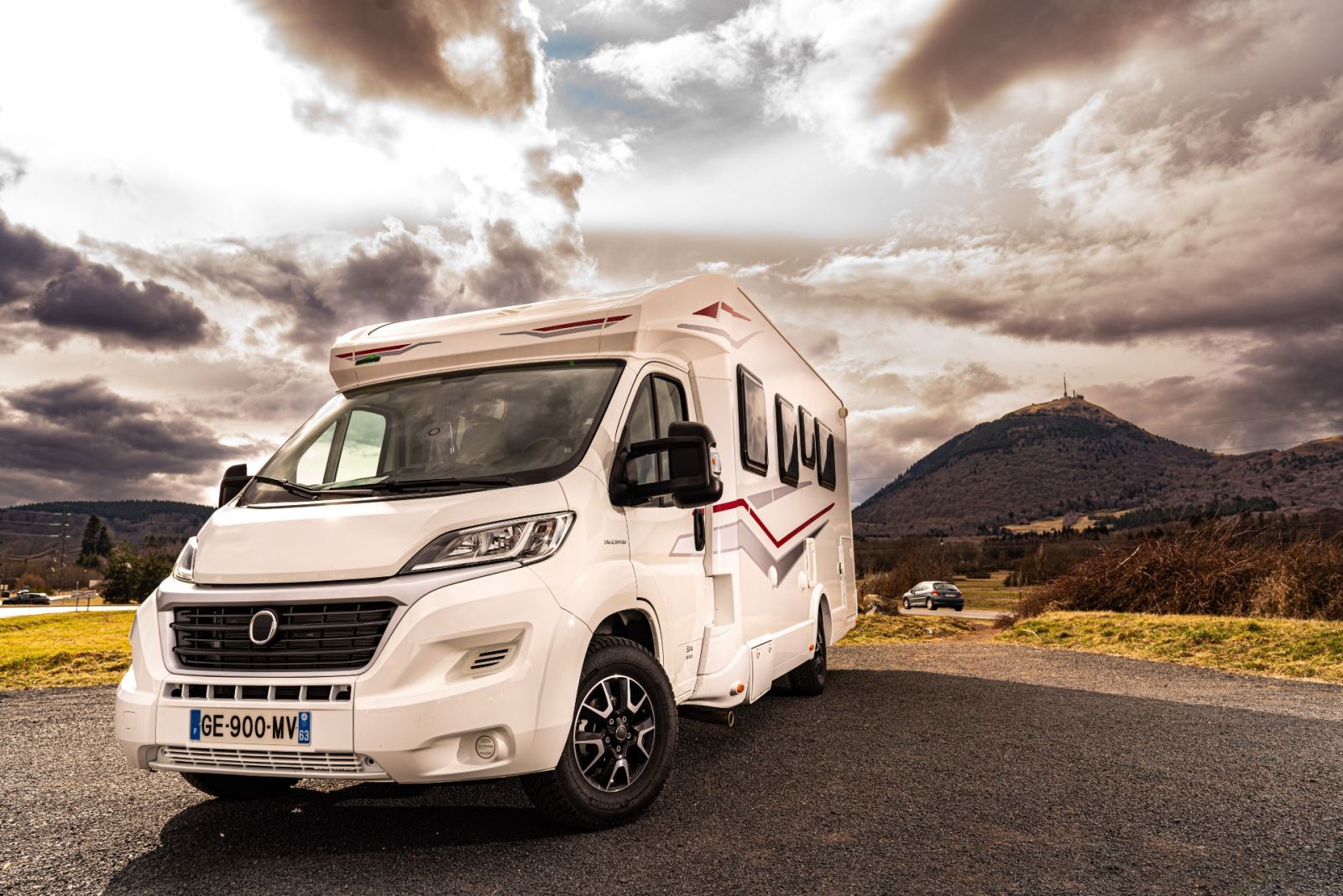
(Photo courtesy of Michelin)
As long as you stick to the correct size, load and speed rating for your campervan or motorhome, you can safely use either van tyres or camper-specific tyres. The latter are a fairly recent development.
This technology includes a multi-layered carcass to support the weight, tread patterns to optimise grip on wet grass and sidewalls that are resistant to UV degradation and kerb damage. Some even have compounds that vary their properties across the width of the tread pattern, rather than using just a single material.
Van tyres tend to be cheaper and are more widely available, while camper-specific tyres can be harder to find as they’re made in batches.
Whichever tyre you prefer, the best motorhome tyre will be from a respected brand such as Michelin, Continental, Pirelli, etc. There are lots of cheap brands on the market and they may not be built to the same standards. If a tyre is half the price of a respected brand, it’s cheap for a reason!
Motorhome tyre safety
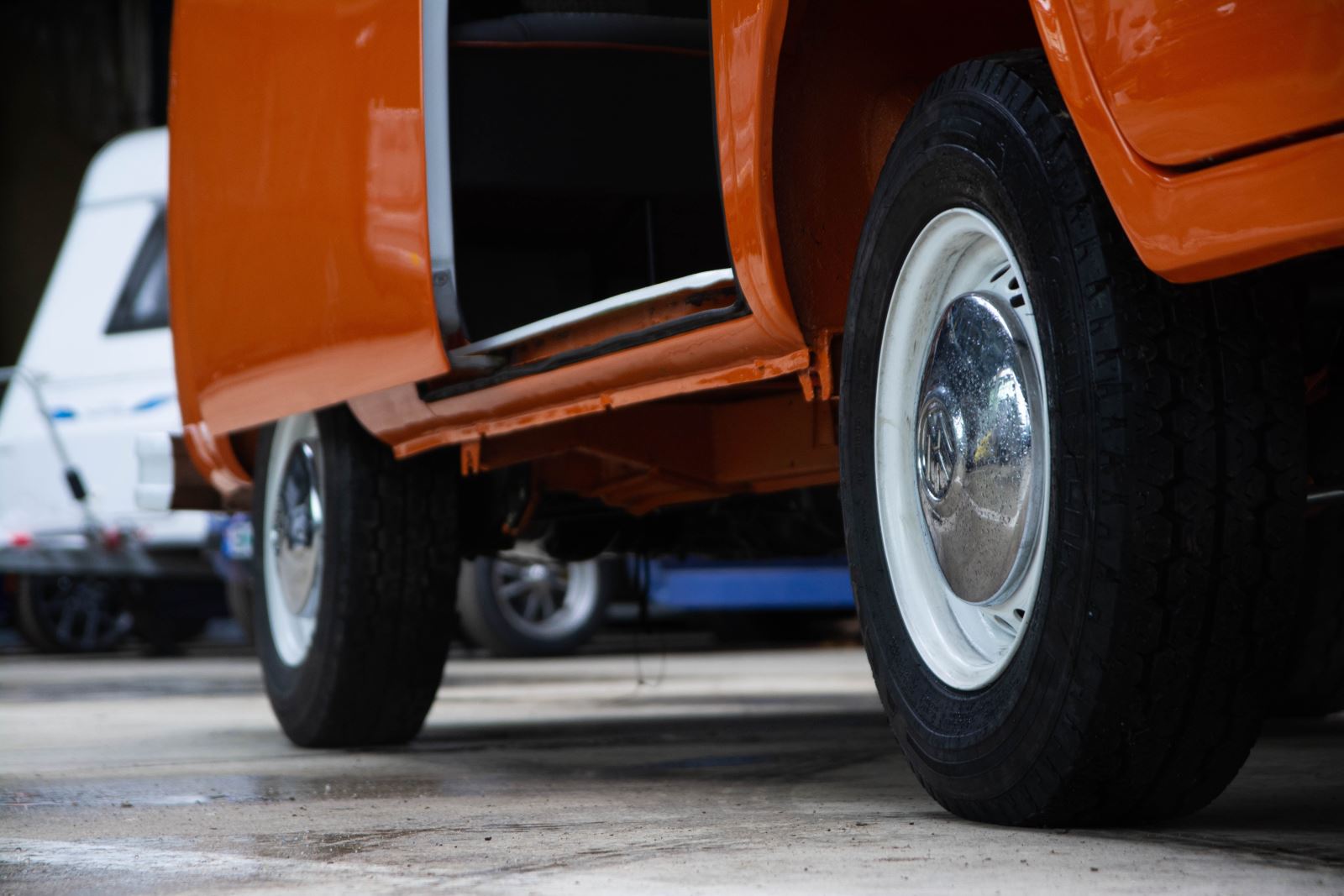
(Photo courtesy of Sorin Dandu on Unsplash)
It gets a bit technical here, but essentially the size of a tyre is specified with a mix of metric width and imperial diameter measurements, with a metric ratio thrown in for good measure.
A typical Fiat Ducato motorhome, for example, will use a 225/75R16 tyre, which means it’s 225mm wide and has an inner diameter (measured at the inner mounting flange) of 16 inches. The ‘75’ bit is the aspect ratio and, in this case, means that the tyre’s sidewall height is 75% of the tread width. The R refers to the tyres’ construction type as being a radial ply (on a radial the inner cords run at 90 degrees to the sidewall. On a cross-ply tyre they run at 45 degrees to the sidewall).
You’ll also see some other numerals on the tyre next to the size, such as 116Q. The 116 is the load rating (1,250kg in this case), while the letter is the speed rating (Q is 99mph). So, a 116 load rating means that every tyre – when correctly inflated – is rated to support a load of 1,250kg per tyre (5,000kg for four or 7,500kg for a double tyre or tag-axle).
Simple, right?
In short, what your handbook states is the correct motorhome tyre size, load and speed rating is the one you should use. While you can safely opt for a higher load rating number (like 118, which is 1,320kg), the tyre will have a stiffer construction that may not work as well with your suspension and could result in a harsher ride.
Looking after your tyres
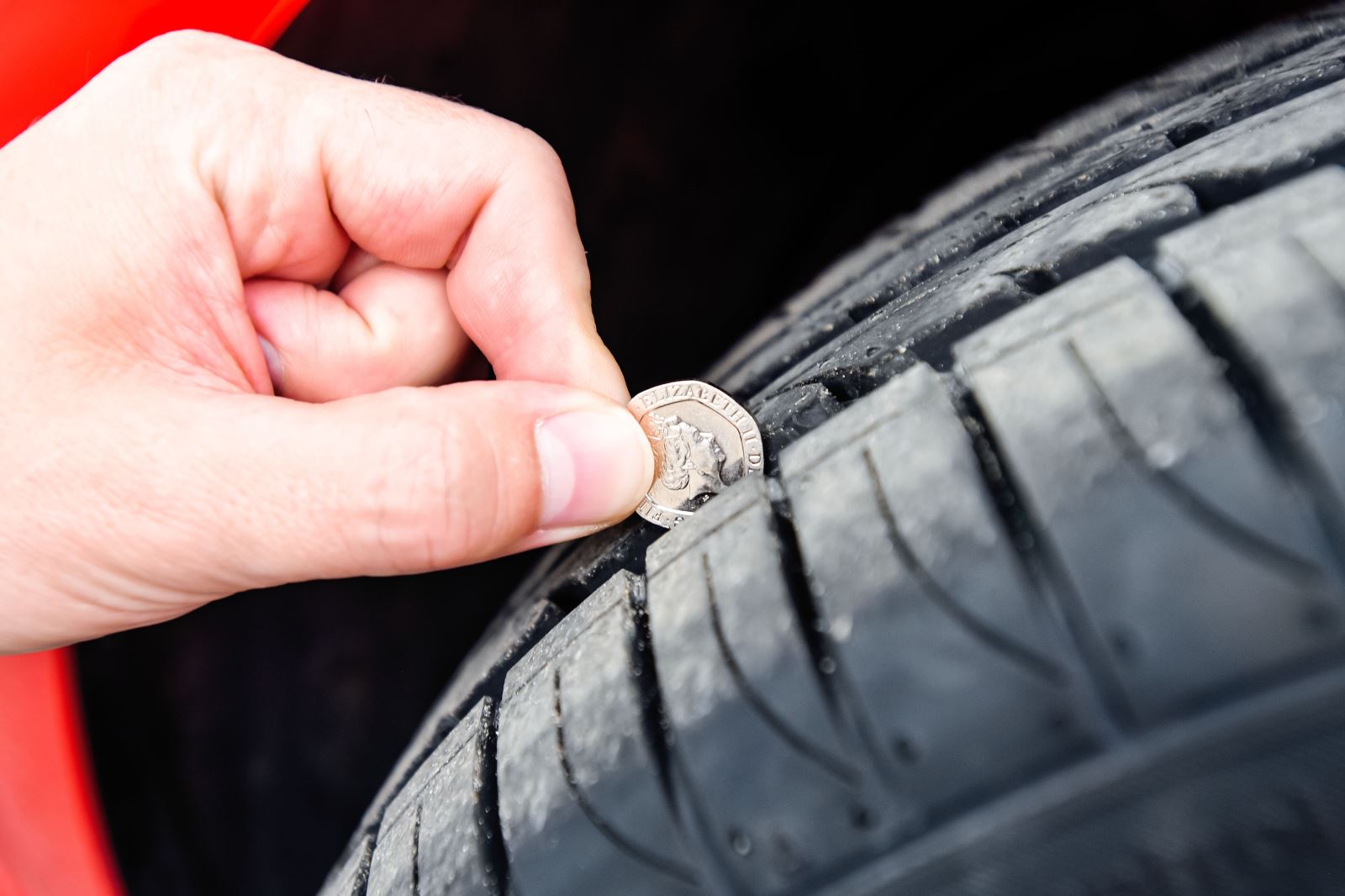
(Photo courtesy of Swansway Motor Group on Unsplash)
Conventional wisdom says you should replace tyres after five or six years. However, some modern tyre makers point out it’s not that simple and depends on how the tyre has been looked after. For example, tyres kept out of sunlight and those that are fitted on lighter motorhomes will last longer than those used continually, left in full sun or fitted to a heavy motorhome.
As many motorhomes do low mileages, it’s often the case that the tyres start to degrade – with the appearance of cracks or bulges – long before the tread depth has worn down.
Once the tread depth is below 3mm, the performance in the wet (and on grassed pitches) is diminished and it’s worth considering replacement. However, the legal requirement for a tyre used on a road vehicle is that it must be replaced when the tread depth across three-quarters of the tread’s circumference is less than 1.6mm.
Motorhome tyres in winter
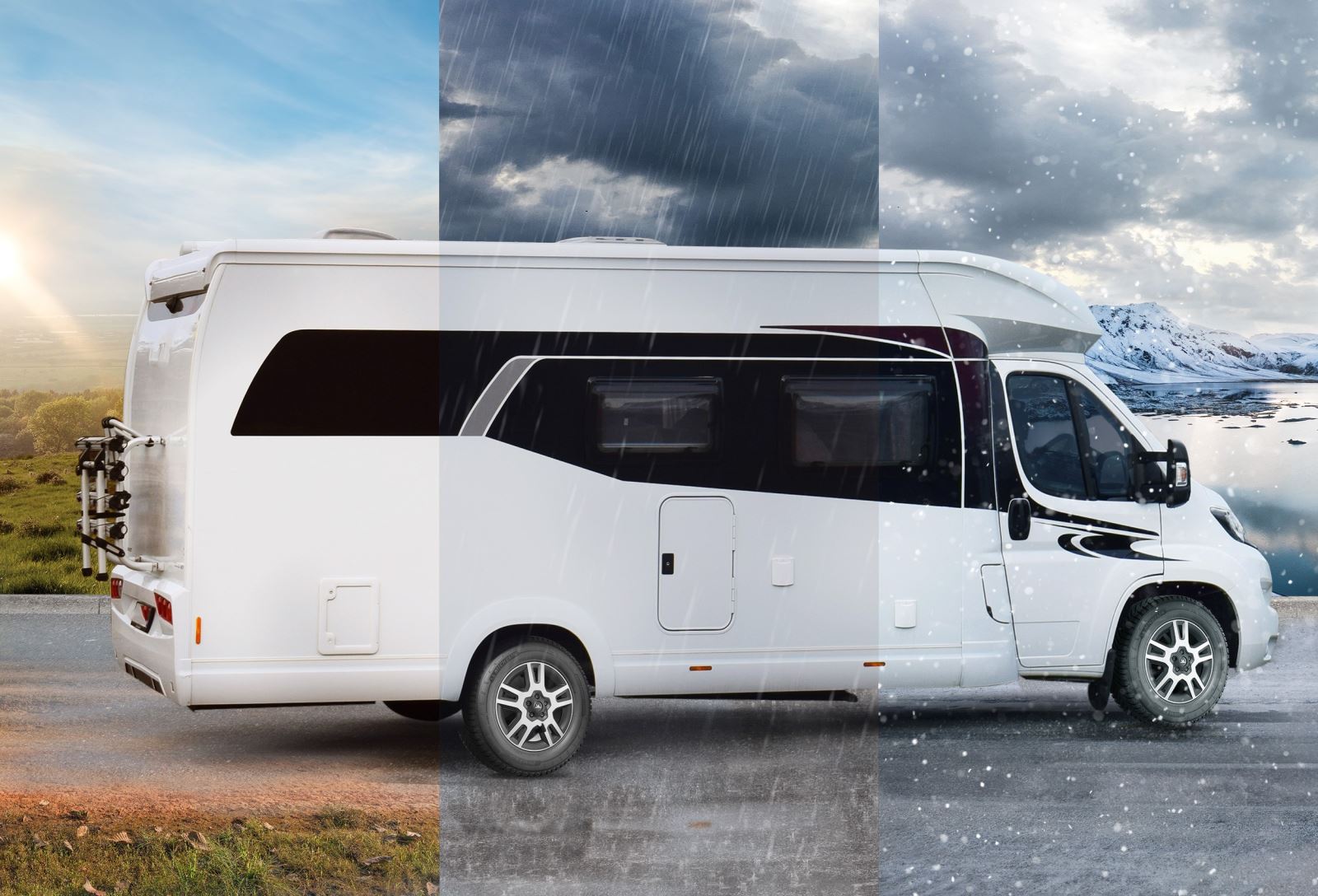
(Photo courtesy of Michelin)
Most motorhome tyres are also rated for mud and snow so can be used in all seasons... up to a point. The M+S symbol means that the tyre has some snow ability but does not mean that it is a winter tyre. Only winter tyres that carry the triple Alpine peak symbol with a snowflake are tested to provide a certain grip level in snow.
If you’re planning to visit a Nordic country or like touring Scotland in winter, you should consider winter tyres. Also, many regions in France now have stipulations for winter tyres (or the use of chains/socks) in the colder months.
Winter tyres are definitely superior at low temperatures. I’d rather have winter tyres than four-wheel drive in snow, but both would be best! You can use winter tyres all year round, but they are noisier and will wear out faster on dry roads, so it’s best to get an extra set of steel rims to mount them on. Ideally, you’d want to swap to winter tyres in November and then back to normal tyres in February or March (as many motorhomers do in European countries).
Problems with motorhome tyres
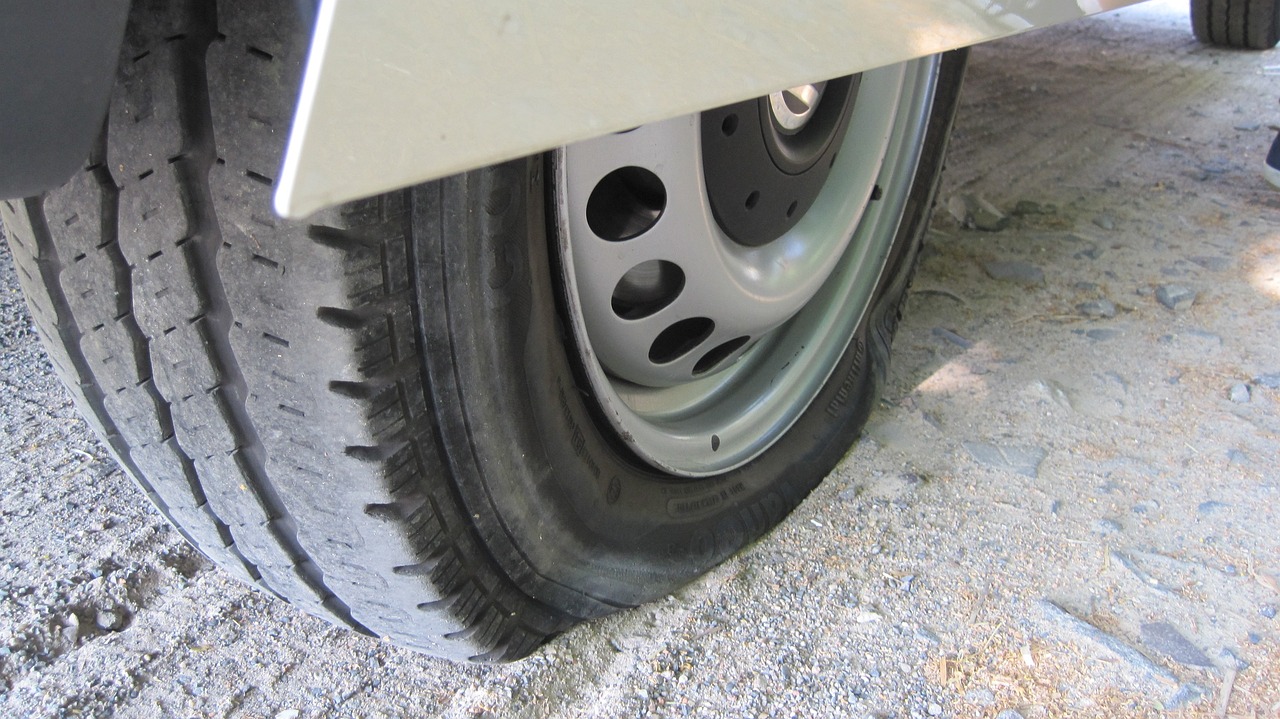
(Photo courtesy of McDowning on Pixabay)
If your motorhome is parked up for long periods it puts all the weight on one area of the tyre. This can lead to a flat spot – not desirable on a thing that has to be circular to perform properly and safely.
Taking the motorhome for a spin every two weeks will help prevent this, while making a small chalk mark of the section of tyre on the ground will help make sure that a new section is on the ground once you’re parked up again.
And, incidentally, a run will help the rest of your motorhome’s health, too – circulating oil, keeping rotating parts free and preventing what’s known as ‘sleepy motorhome’ syndrome.
Ultraviolet light is a cause of tyre damage, so covering them when parked can help protect motorhome tyres. Lastly, a regular check of pressures is good practice as tyres tend to lose air over time.
Another issue is that not all new motorhomes come with a spare wheel or tyre – it’s likely that an extra 50kg of payload or an electronic gadget is more likely to tempt you into buying a new motorhome or campervan. Also, some simply don’t have the space under the floor to install a spare wheel carrier and wheel.
While tyre sealant and an inflator can deal with punctures from items such as thorns, nails and screws, for any hole above the size of a pea, they’re pretty useless and you’ll need a replacement.
Looking after your tyres can help to reduce the risk of getting into a situation where a spare is needed, including keeping an eye on your tyre pressure.
Motorhome tyre pressures
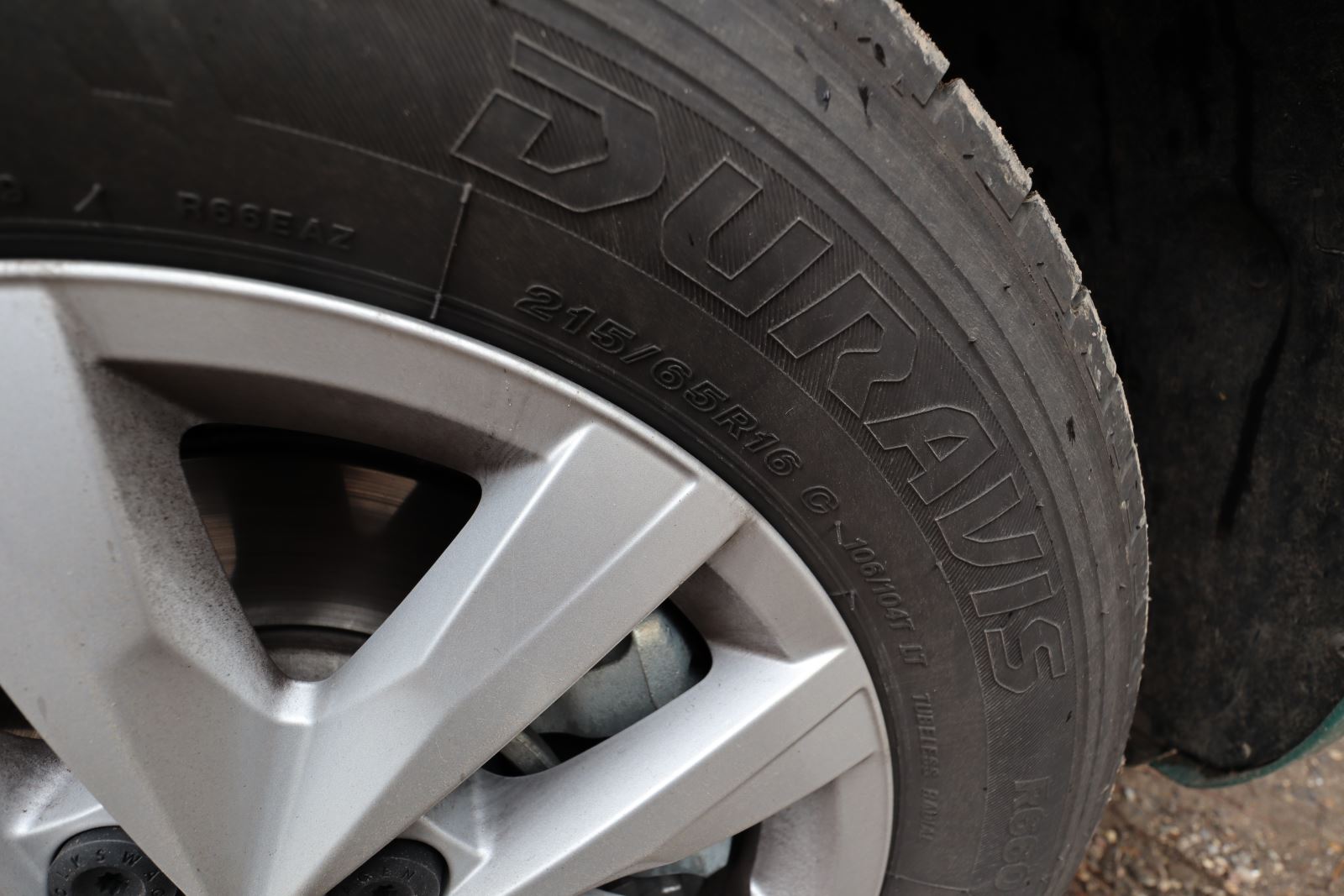
Just like in a car, maintaining the recommended tyre pressure doesn’t just help you save fuel and travel more efficiently – it’s essential to staying safe while on the road.
Unlike a car or van that has the tyre pressures stamped on the door jamb, though, the handmade nature of a motorhome throws up a few variables when it comes to finding the correct tyre pressures. Not all makers update the original tyre pressure label for the original van so this can’t be relied on.
Motorhome tyre pressures and weight
One of the biggest variables here is the weight of all your touring equipment and any accessories you’ve had added to the motorhome. Anything that is bolted to the vehicle or enters it via a hatch or doorway must be taken into consideration for weight.
While you could weigh all these items individually, it’s safer and easier to visit a weighbridge. These will either be listed under ‘weighbridge’ online in your local area or will often be found at scrapyards and farms.
You’ll need to visit one of these (ring to find the best time to visit) and get the front axle and rear axle (or axles if you have a tag-axle model) weighed individually. Check this weight is under your maximum axle limits for the front and rear axle of your motorhome (see the manual or chassis plate details).
When you go to a weighbridge to measure your axle loads, you assume the load is equally distributed across the axle. There is always the possibility loading is not equally distributed, especially if, like some travel writers, a driver throws in a couple of crates of wine into one corner of the rear garage on their way back from France.
This all sounds like a lot of fuss, but if a motorhome is found to be overladen, you can be fined and/or given penalty points on your licence. It’s worth noting that VOSA uses technology that weighs your vehicle when it’s in motion. So, it’s better to check it first.
If you are overladen and emptying the water tanks and thinning down your touring kit isn’t enough to solve it, you might need to look at replating your vehicle or consider replacing it.
TyreSafe recommends a margin of safety when selecting motorhome tyres so your maximum axle load does not exceed 90% of the maximum load capability of the tyres. This will also partly compensate for unequal load distribution.
The area of contact is, to a certain extent, dictated by the air pressure inside the motorhome tyre: too high and the patch becomes smaller as the face of the tyre bulges slightly, creating a curved surface. This can reduce grip as less of the tread is in good contact with the road surface. Underinflation sees the surface curving inwards and, with the tyre now more flexible, handling can be adversely affected. This can also lead to overheating of the tyre.
Wear patterns are affected, too: over-inflation leads to wear around the centre of the tread, while underinflation leads to wear at the outside edges. Uneven wear at one edge can indicate tracking misalignment.
Motorhome tyre pressures chart
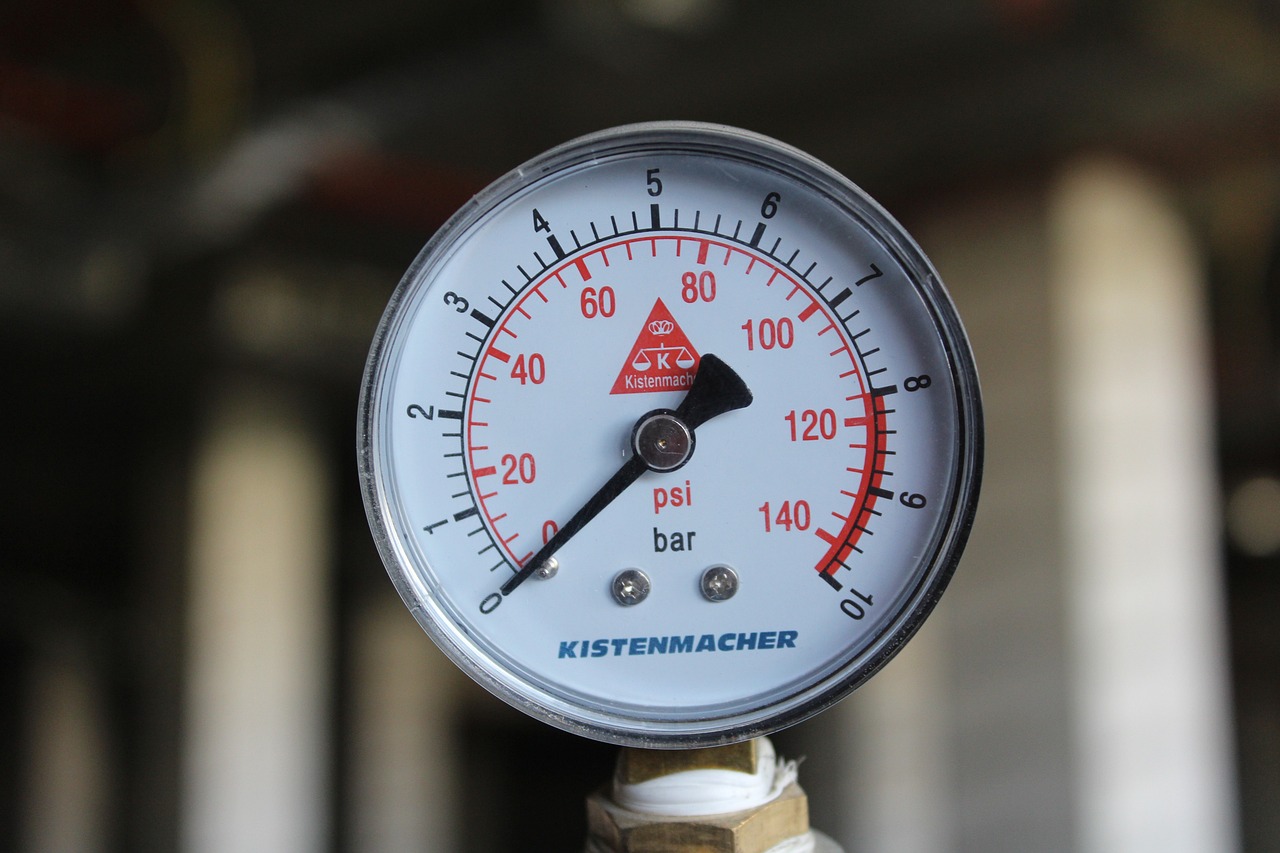
(Photo courtesy of EzSbini on Pixabay)
Calculating correct motorhome tyre pressures can be tricky, as, unlike the commercial vehicle it’s based on, a motorhome or campervan will have a more constant overall weight.
Once you’ve obtained the weight of your motorhome, contact the manufacturer of the tyres and ask for its pressure recommendations. TyreSafe, the UK’s leading tyre safety body, has a specific section on its website that includes motorhome tyre pressure charts, but it is best to go to the tyre manufacturer direct as these will be more specific to the brand.
You need to set the motorhome tyre pressures when the tyre is cold (when it’s hot after a motorway run, the heated air will increase the pressure).
Armed with these numbers, use an airline to inflate the tyre past the desired pressure, then use an accurate gauge with a bleed-off valve to gradually lower the pressure until it is perfect. If you have a tyre pressure monitoring system (TPMS), reset it to these new pressures.
Sometimes just being able to inflate your tyres to the correct pressure can be challenging, especially if you have a larger motorhome. This is because garage forecourt tyre inflation points sometimes can’t always inflate to the higher pressures required by the tyres fitted to heavier motorhomes. Thankfully, heavy-duty tyre inflators that can do the job are available. An example is the Ring RAC 900 (which is around £80).
It’s worth checking these motorhome tyre pressures every few weeks, or at least before any long journeys, as tyres will naturally lose a little pressure over time (especially with a 3.5-tonne motorhome on top of them).
Valves often get mentioned in regard to motorhomes and the key point here is that motorhomes based on large vans (such as the Fiat Ducato) or a truck chassis (like Iveco) need to use suitably rated tyre valves that are designed to cope with the correct pressure. These may be in rubber or metal, but must be rated for a high-enough pressure and specifically designed to fit the vehicle’s steel or alloy wheel.
Motorhome tyre pressure monitoring systems
Tyre pressure monitoring systems – or TPMS – are now mandatory in Europe for all new vehicles (including motorhomes) going through Type Approval, while it will be compulsory kit from July 2024 for all new vehicles. Campervans, which are based on passenger vehicles, including the Volkswagen Transporter, will have TPMS installed, but many motorhomes will only have TPMS installed if the purchaser specifies it, or the converter has opted to offer TPMS as standard.
There are aftermarket TPMS products that do a similar job to original manufacturers’ systems, but independently of the vehicle controls and using external sensors fitted to the tyre valve in place of the normal dust cap. These aftermarket versions of TPMS do not form part of the vehicle’s original equipment and so are not subject to MoT testing.
If the warning light is due to a faulty sensor, you are looking at the cost of removing the tyre and replacing the sensor. This cost is likely to be between £60 and £85. A tyre dealer will almost certainly fit a generic sensor and program it into the vehicle’s receiver and software.
Luckily, most tyre fitting companies have invested in equipment and training to be able to deal with TPMS problems. Valves can suffer from the effects of corrosion, physical damage and high mileage. While most motorhomes won’t clock up a high mileage, the lifetime of batteries in the sensors is claimed to be around seven years or more, but experience indicates five years is a more realistic lifespan. Battery failure also means a new sensor must be fitted.
For motorhomes there is another potential problem, namely manufacturers’ rigid parameters for setting off warning signals. Cars have relatively simple loading situations with a set number of seats and limited luggage capacity. Car manufacturers recognise this with the provision of two alternative sets of tyre pressures – with two people on board and fully loaded with five people and luggage.
Motorhomes utilising the same base vehicle will vary enormously from a small two-berth to a large six-berth. It may carry very little or a great deal depending on style of use and capacity of lockers. The location of the loading may well vary considerably, as when placing bikes on a rear carrier for example. A heavy rear loading, especially where there is a long overhang, can change the axle loading characteristics hugely. Another scenario is a converter using a single base vehicle for a motorhome, which can be sold as a 3,500kg vehicle, or with an upgrade option to, say, 4,250kg.
It is important to establish what your likely maximum loadings will be before changing motorhome tyre pressures and always seek professional help. It is unsafe to simply lower motorhome tyre pressures to provide a softer ride. If your motorhome’s safe working tyre pressure is well below the originally specified pressures, there is a good chance the TPMS warning signal will be triggered. This is annoying, and, more importantly, the TPMS is no longer able to function as it is intended.
From the motorhome perspective, one real positive is TPMS may well discourage the practice of owners reducing their tyre pressures to get a softer ride, irrespective of loading requirements. If you are going to try to change what you perceive to be an impractical set of parameters for your TPMS or too-high tyre pressure ratings, you need to seek advice to ensure that at all times your tyres are inflated to be capable of supporting your fully loaded motorhome.
Motorhome alloy wheels
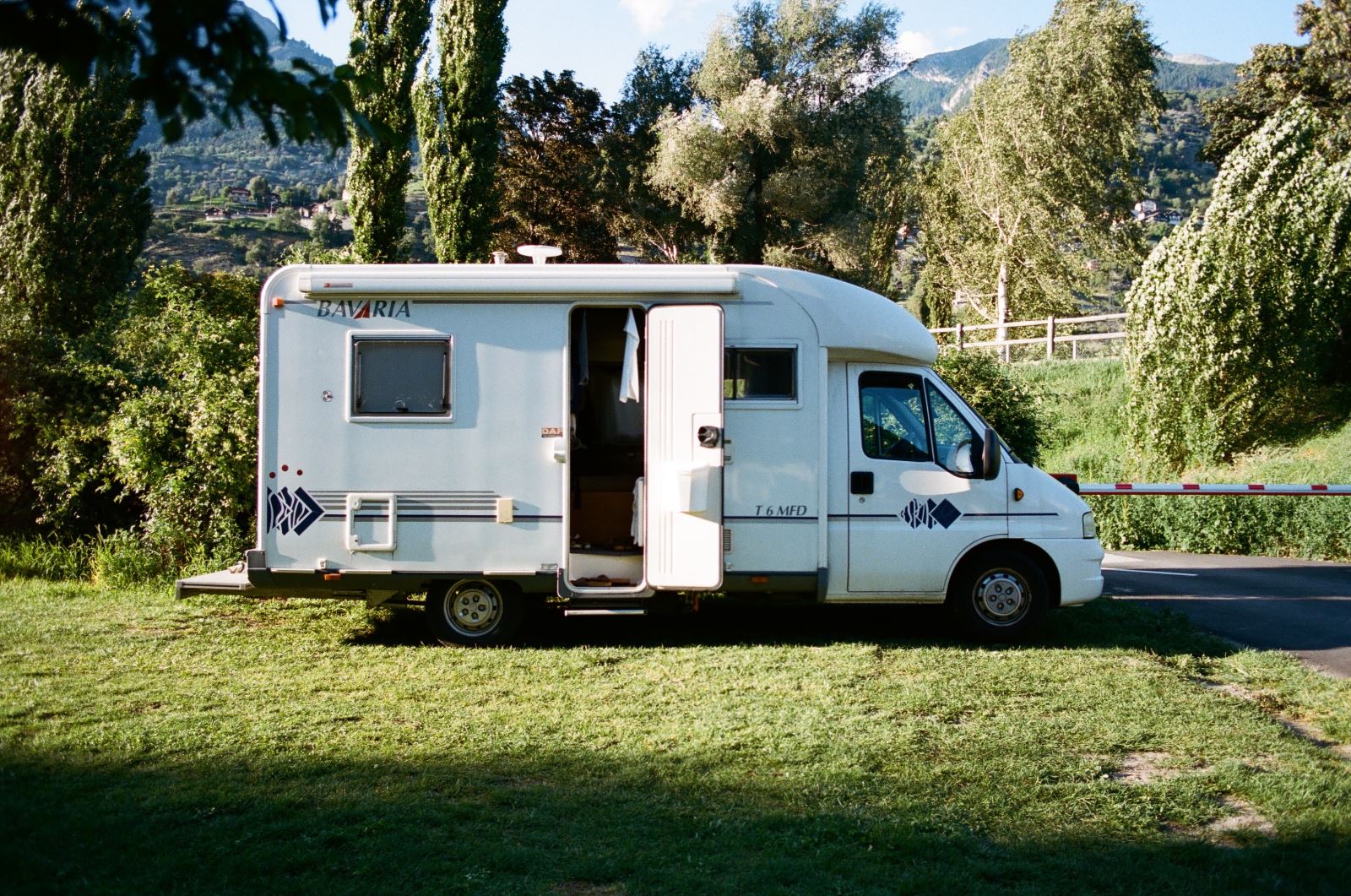
(Photo courtesy of Lucas Favre on Unsplash)
Many motorhomes now come with alloy wheels. But if you have a model with steel wheels and want to change to alloys, then when your tyres need replacing is the ideal time.
It’s also important to fit motorhome alloy wheels that have a suitable load rating for your vehicle and that they fit correctly.
To check if your motorhome tyres are correct for the load they carry you’ll need some information and this can be found on your motorhome's weight plate. Usually found under the bonnet, the plate is stamped with four figures (five if your motorhome has three axles). All are in kilograms – the first is the maximum legal weight your motorhome can legally and safely be when fully loaded (and that includes the people on board, too). The second is the maximum permissible weight of the motorhome and a towed trailer (known as the gross train weight). The front axle is the third, and the fourth (and possiby fifth) is the maximum weight of the rear axle/s.
The axle weights are the figures you will need, and, if you add them together, you’ll find the sum total is more than the first figure – the total loaded weight. The reason for this is to allow for load distribution – that is more weight on one axle and less on the other. You need the highest of the axle weight figures to calculate if your tyres are correctly load rated.
Divide the figure in half and you have the maximum weight each tyre needs to support. Checking this against the load index table will give a reference number for the best motorhome tyre.
Why pick alloy wheels for your motorhome?
There is no technical advantage to fitting motorhome alloy wheels. To make them as strong as the equivalent steel wheel they use a thicker section of material, negating the benefit of the lighter metal alloy. There is such a wide choice of styles available that it comes down to personal taste. But bear in mind that the more intricate the design, the harder they will be to keep clean.
Some motorhome alloy wheels are also slightly wider than the stock steel wheels and this can alter the vehicle’s handling and ride. Typically, larger-diameter wheels and low-profile tyres give a slightly harsher ride as there is less flex in the tyre’s sidewall to soak up bumps.
Wider tyres can also result in the vehicle being more susceptible to ‘tramlining’ – pulling the vehicle from side to side on the road camber – and torque steer when accelerating hard.
However, slightly larger-diameter wheels (say, an inch or two larger than stock) of similar width may not make much difference. Run 20in wheels on your VW Transporter, though, and you will notice the difference!
Expert motorhome advice to your door!
Why not subscribe to one of our fabulous magazines and get expert advice, travel ideas, technical help and all the latest news for your motorhome and your motorhome adventures!

Want to know more about MMM magazine?
Every month MMM has articles written by motorhomers who have been there and done it, from great UK and European (and further afield) tours, campsite reviews, owners' reports and DIY projects among other things.
MMM's tests, reviews and expert buying guides are not to be missed. MMM's technical advice is a must and includes everything from weekend jobs to longer-term DIY projects. And much more!
About MMM magazine
Want to know more about What Motorhome magazine?
Every issue of What Motorhome magazine provides essential buying advice for anyone looking to buy a new motorhome or campervan or upgrade their existing model. With a pedigree of over 30 years of offering the best motorhome and campervan buying advice, every issue of What Motorhome includes more new motorhome and campervan reviews than you will find in any other magazine.
About What Motorhome
Want to know more about Campervan magazine?
Campervan is the exciting monthly magazine that will give you all the inspiration you need to explore the world in your campervan. Every issue is packed with real-life campervanning experiences, inspiring travel ideas in the UK and further afield, the best campsites to stay on, campervan road tests and reviews of the latest models, and much more!
About Campervan magazineExpert Camping advice!

Camping magazine has been the voice of campers for over 60 years!
Camping is the UK's only magazine devoted to the wonderful world of life under canvas and the freedom it brings.
Every issue is packed with inspirational travel, the top camping sites to stay on, reviews of the latest tents, camping gear reviews, practical help and much more to help you get the most out of your camping adventures.
Want to know more about Camping magazine?
About Camping magazineExpert Caravan advice to your door!

Caravan magazine has been inspiring caravanners for more than 80 years! We have grown to become a leading authority on caravans, the caravan industry, caravan lifestyle, campsites and caravan travel destinations. We know what our readers want – and that's to make the most of their caravans and their holidays!
Want to know more about Caravan magazine?
About Caravan magazine










Recent Updates
Engine management lights: all you need to know
What is the engine management light? What does it mean, and what do I have to do? ...
Motorhome air suspension: all you need to know
Motorhomes are heavy and the additional weight of equipment and height of the bodywork can increase the loads ...
Motorhome WiFi: how to get better motorhome internet
Staying connected on the move is more and more essential, so relying on campsite WiFi isn't an option – here ...
A class of their own - our guide to A-class motorhomes
Thinking of trading up to an A-class, or even going straight to the top of the motorhome tree? We guide you ...
Explore overseas on a motorhome dream tour
Enjoy exotic travel in a campervan or motorhome by hiring, swapping with someone else or exporting your ...
Motorhome water systems: everything you need to know
On-board water is an important part of every motorhome – here’s everything you need to know ...
Campervanning in Europe: what you need to know
Whether you're planning a leisurely drive through the French countryside, navigating bustling city streets in ...
Campervan security: all you need to know
With thefts on the increase, it’s important to know how to keep your campervan secure and prevent campervan ...
Campervan furniture: everything you need to know
Our campervan experts guide you through all the essentials for your campervan, including tables, chairs, ...
Campervan finance: how to fund your purchase
Here we look at the different types of campervan finance available, to help you decide what’s the best option ...
Other Articles
Britain’s best used motorhomes
Want a great motorhome without paying the premium for a new one? Here's a guide to the best you can get in the pre-owned market for each layout, ...
Which motorhome? Choosing the perfect motorhome for you
Choosing a motorhome or campervan is one of the biggest buying decisions you’ll ever make, so it's important ...
Campervan washroom essentials: stay fresh on the road
Our guide will take you through the campervan washroom essentials you'll need so you're well-prepared for ...
Dogs in campervans: all you need to know
Follow our advice and your dog will enjoy campervanning as much as you do ...
Electric campervans: all you need to know
Our guide will take you through everything you need to know about electric campervans and what the future ...
Motorhome electrics: a complete guide to your motorhome electrical set-up
Motorhome electrics can dramatically enhance the convenience and comfort of your vehicle – but they can be ...
Lighting for campervans: all you need to know
We guide you through all the lighting options available for you and your campervan, including interior ...
Electric bikes for motorhomes: our ultimate guide
Read our comprehensive guide to electric bikes for motorhome owners, helping you add electric power to your ...
Our guide to 'cheap' motorhomes in 2024
If you're on the hunt for an affordable new motorhome, this is the best place to start – we've rounded up a ...
Campervans in winter: all you need to know
Here's your guide to preparing your campervan for the colder months, whether you will be using it or putting ...